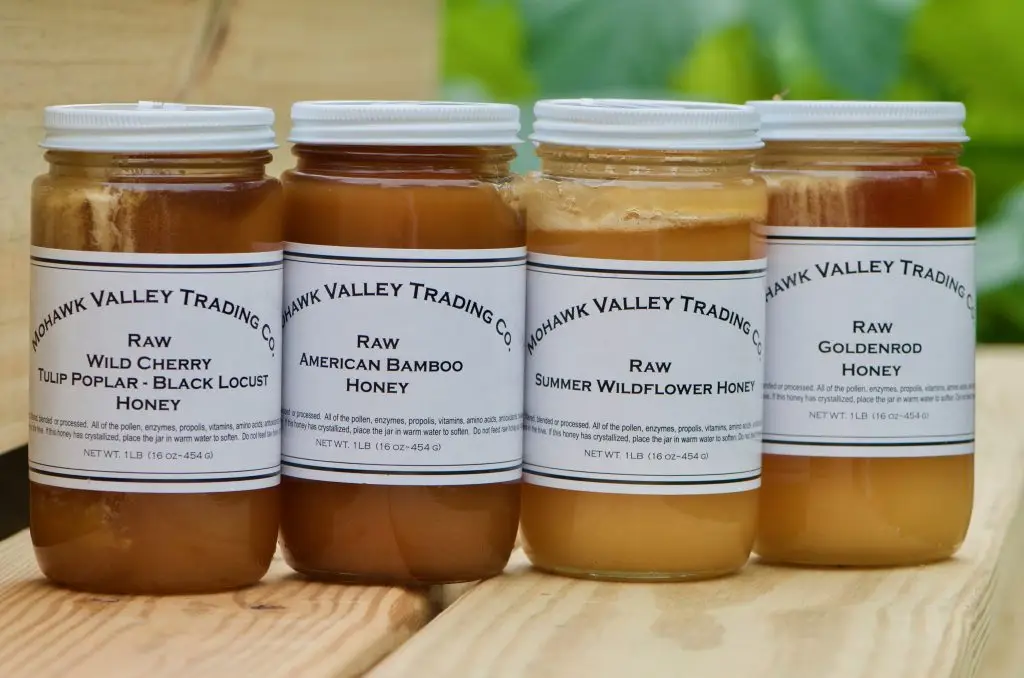Description
Raw honey is honey in its purest form, as it comes directly from the beehive, retaining natural enzymes, vitamins, and minerals, along with bee pollen and propolis. It has a thicker texture, opaque appearance, and more pronounced flavor than regular, processed honey.
If honey is to be used for its health benefits, it must be raw honey, as heating and filtering honey destroy the pollen, enzymes, propolis, vitamins, amino acids, antioxidants, and aromatics.
Mohawk Valley Trading Company honey is raw and unfiltered. It is in the same condition as it was when it was in the hive.
We specialize in unfiltered raw, varietal honey, which is made primarily from the nectar of a particular type of blossom or flower. To capture the unique character and flavor of the blossom or flower, beekeepers must study botanical bloom and flowering patterns when planning hive placement.
Here are a few words about our honey from one of the world’s most renowned chefs Tom Colicchio:
“If you’re looking for really great honey, here’s my first piece of advice to you: You’re unlikely to find it in a plastic squeeze bottle shaped like a bear.
My second piece of advice: Try these raw honeys from Mohawk Valley Trading Company. Raw honey is unfiltered, unheated and totally unprocessed, and contains all of the same pollen, enzymes, vitamins, antioxidants, minerals, aromatics, and amino acids that it had while still in the hive. I’m told that raw honey has all kinds of health benefits, but I love it because I think it tastes exactly as honey should and has a wonderful, spreadable consistency and a slightly crunchy, substantial texture.”
Not only do we use raw honeys from Mohawk Valley Trading Company at Craftbar, ’wichcraft and Colicchio & Sons, but I keep a jar of the stuff on my desk at all times.”
No pesticides or herbicides are used in our apiaries. Although it is not labeled or certified organic, raw honey from the Mohawk Valley Trading Company is as organic as any produced in the USA.
Additional information
| Variety | Raw Adirondack Wildflower Honey, Raw Summer Wildflower Honey, Raw Autumn Wildflower Honey, Raw American Bamboo Honey, Raw Buckwheat Honey, Raw Goldenrod Honey |
|---|---|
| Size | 1 lb., 2 lb. 10 oz., 1 lb. Case of 12, 2 lb. 10 oz. Case of 6 |

Reviews
There are no reviews yet.